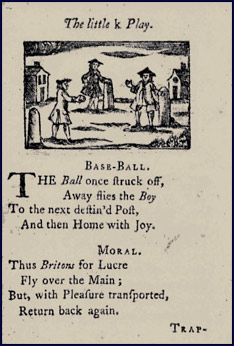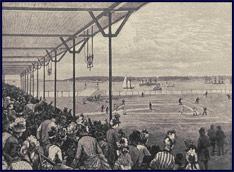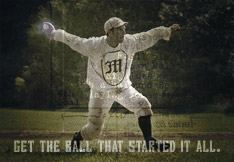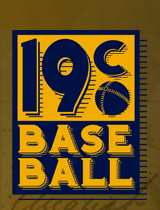Evolution of the Baseball Field
By Eric Miklich

he written game rules were not the only area to undergo numerous changes in the 19th century. As the competitive balance between batters and pitchers shifted, the rules were adjusted to maintain the equilibrium of the game. This was affected by modifying the physical domains of these positions as well as the distances between them. The pitcher's province developed from a single line to two lines to "boxes'" of various dimensions to finally a rubber slab. The batter's realm also developed from a single line to a "box," which would have two dimensions and would eventually be placed at the mercy of the nomadic home base. Home plate underwent three shape changes and three different resting places and the bases changed size twice and were placed in three different positions. Since 1900 there have been relatively few changes to the tangible playing field.
Various sources have been used in researching the following text and diagrams. The information used to formulate the following diagrams was taken from the highest governing baseball bodies and respected authors from 1857 through 1900. Many times the field diagrams of the 1860's and 1870's, included with the yearly guides, did not match the written rules of that year. These diagrams do not represent exactly how all baseball diamonds were used across America by the hundreds of amateur and professional teams. Undoubtedly the physical appearance of the playing field was altered by these clubs and the modifications, as well as the increasing skill level of the players, was responsible for the eventual changes in the playing rules. In creating the field diagrams that follow, the text of the yearly rules generally took precedence over the printed field diagrams, but inference and ancillary printed accounts have also been utilized.
- Evolution of the Batter's Area
- The Batter's Area and Position (Pre-1856 to 1873)
- Home Runs
- Evolution of the Pitcher's Area
- Evolution of the Bases and Foul Lines
- Night Baseball in the 19th Century




